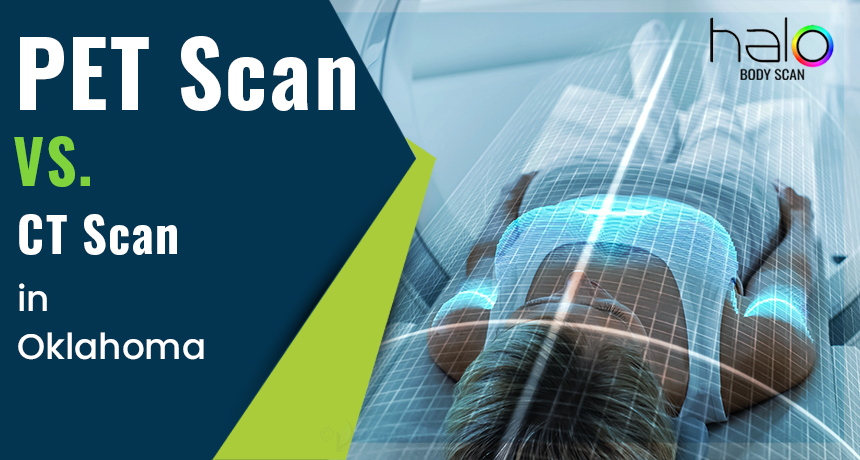PET Scan vs. CT Scan in Oklahoma
by Halo Body Scan

PET/CT scanners have become widely adopted in today’s medical field—and for good reason. This advanced technology provides your doctor with a clearer, more complete picture of what’s happening inside your body. It helps detect health problems early, guide treatment decisions, and monitor progress with remarkable precision. At Halo Body Scan, we’re proud to offer this state-of-the-art imaging to patients in Oklahoma and the surrounding areas—because sometimes, a second look can make all the difference.
What makes PET/CT scans so powerful? They combine two advanced imaging technologies into one: PET (Positron Emission Tomography) reveals how your tissues and organs are functioning at the cellular level, while CT (Computed Tomography) provides clear, cross-sectional images of your body’s internal anatomy. Together, they offer a more complete and accurate picture of your health.
Now, let’s explore the key differences between PET and CT scans when each is used and why their combination can have a meaningful impact on your care.
What’s the Difference Between a CT Scan and a PET Scan?
- Purpose: As mentioned previously, a CT scan creates detailed, static images of your body’s internal structures—such as organs, bones, and soft tissues—that aren’t easily visible with standard X-rays. A PET scan goes a step further, capturing how tissues and organs are functioning at the cellular level.
- What it Detects: PET scans detect and manage conditions like cancer, heart disease, and neurological disorders. CT scans provide detailed images to diagnose and monitor fractures, infections, tumors, internal bleeding, vascular diseases, and certain lung and abdominal conditions.
- Technology Used: A CT scan uses rotating X-rays to create in-depth, 3D images of the body’s anatomy. A PET scan involves injecting a radiotracer that emits positrons, allowing the scanner to capture metabolic activity in real-time.
- Duration: Both CT and PET scans are outpatient procedures, meaning you can resume your normal activities once the exam is complete. However, CT scans are typically quicker since PET scans require a waiting period after the radiotracer injection to ensure the tracer properly distributes throughout the body.
- Radiant Exposure: Some CT scans use contrast dye to enhance the visibility of abnormalities, but the radiation itself is limited to the time of the scan and does not stay in the body. In contrast, a PET scan involves a radioactive tracer that stays in your system briefly—drinking plenty of fluids afterward helps your body eliminate it more quickly.
- Preparation: CT scans typically require little preparation—fasting may be needed if contrast dye is used, and you’ll need to remove any metal objects. PET scans require more prep, including fasting for several hours, avoiding exercise beforehand, and possibly following dietary restrictions.
Empower Your Health Journey with Trusted Care at Halo Body Scan
CT and PET scans are essential diagnostic tools in modern medicine, each playing a unique role in medical imaging. When combined, PET/CT scans offer significant advantages over using either technology alone. This powerful combination enhances accuracy in detecting serious diseases like cancer, allows for precise lesion localization, and provides more detailed staging. It also streamlines diagnosis and treatment planning while delivering a comprehensive evaluation of treatment effectiveness. Together, these benefits lead to better patient outcomes and more personalized care. If you’re in Oklahoma or the surrounding area and need PET/CT scan services, you can count on Halo Body Scan to support your health journey. Call us today at (405) 477-1100 or schedule your appointment online.
Source:
https://www.verywellhealth.com/pet-scan-vs-ct-scan-in-oklahoma-7095580
https://www.medicinenet.com/difference_between_a_pet_scan_and_ct_scan/article.htm
©2025 Halo Body Scan. Medical Marketing by Demand Boost, Inc.
